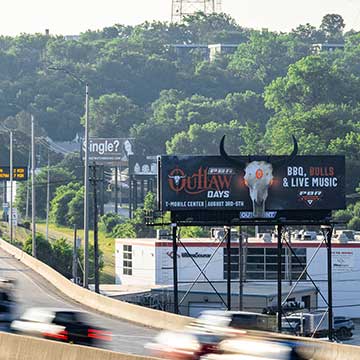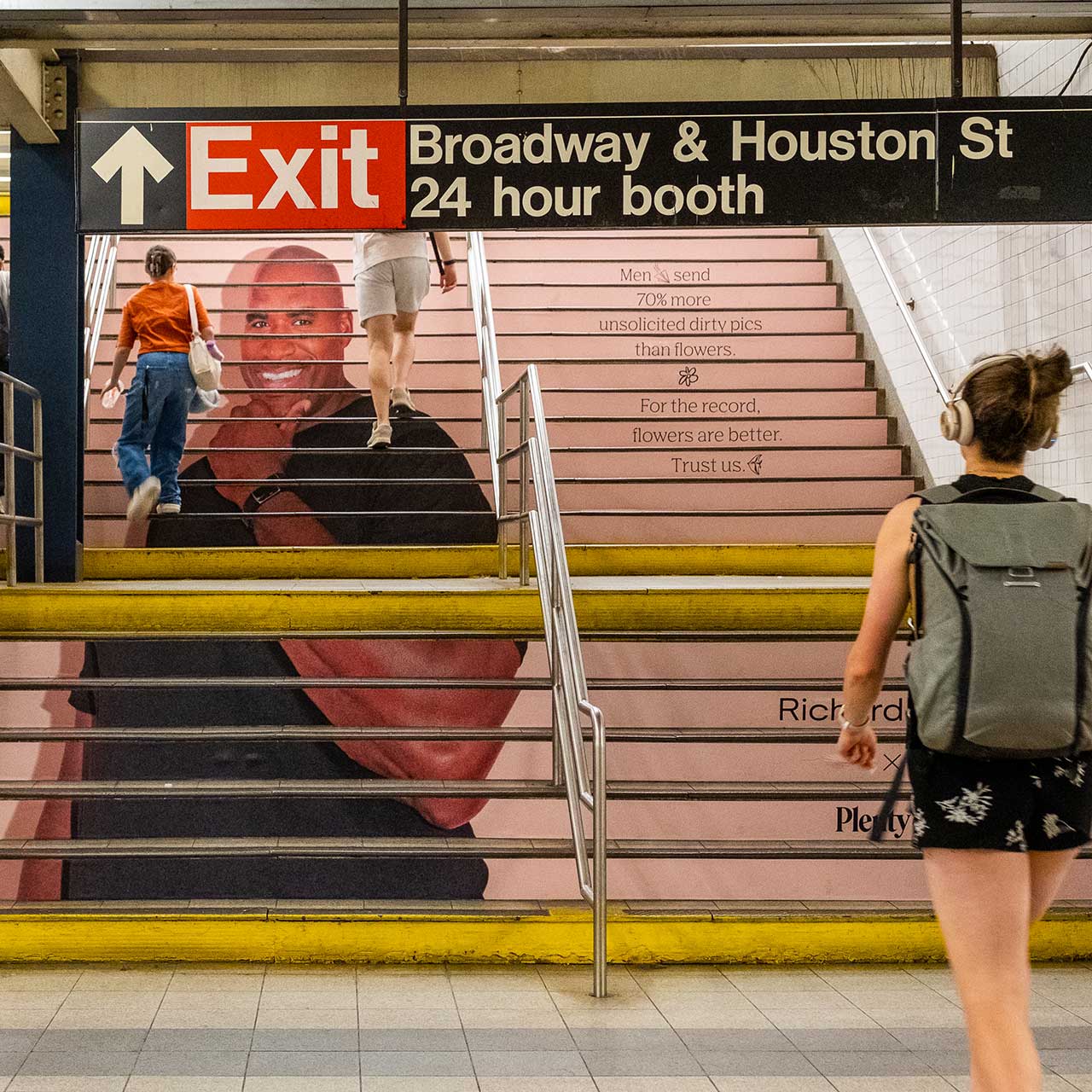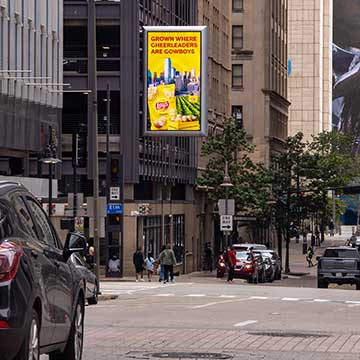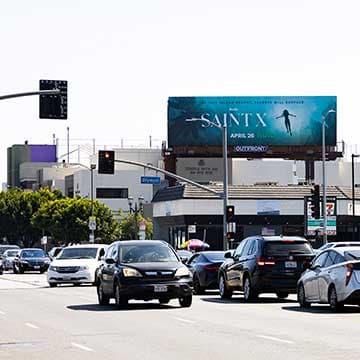
How Brands That Care Can Use Out of Home to Push Forward Purpose: Creatives Talk It OUT
September 6, 2023
In an era when every purchase can feel like a political statement, brands that stand for something, stand out. And by standing for something, brands can find resonance with audiences who care as deeply as they do.
Take, for example, Ben & Jerry's. This is a brand that is very vocal about what it cares about. The ice cream maker doesn't just talk the talk, it walks the walk. For the past nearly 40 years, Ben & Jerry’s has donated 7.5% of its earnings to social causes. That has made a profound impact on consumers, who might choose a pint of Cherry Garcia over an equally delicious option because they want to feel good about the purchases they make.

In fact, purpose has gone from exception to expectation, as 86% of consumers now expect a brand to take actions beyond just the product or service they provide, and 23% plan to shop a retailer or buy an item specifically because of its involvement in a cause (SOURCE: Mintel, Winter Holiday Shopping US Databook, 2023).
So, how do brands make sure that their target audiences know what they stand for?
The answer is out of home.
We sat down with two of the experts from STUDIOS, our award-winning in-house creative agency – Regional Art Director Jarrod Glick and Graphic Designer Izzy Martinez – to find out how brands that care can make purpose-driven marketing work.
Here's the first thing to understand about purpose-driven marketing. You can't fake it. "It's really all about a brand truth," Martinez emphasized. "Is this campaign true to it? Does the brand stand for what it's messaging or is it just for a press release?"
"It's not always about selling," said Glick. "Purpose driven advertising uses your brand to actually do some good."
Martinez added, "It could be there to generate change of some kind and have a lasting impact or impression on a community, in the spirit of PSA-style campaigns."
A powerful recent example of such a campaign came from Bombas, a sock company known for its "One Purchased = One Donated" business model, which has to date made over 100 million donations through a nationwide network of giving partners.
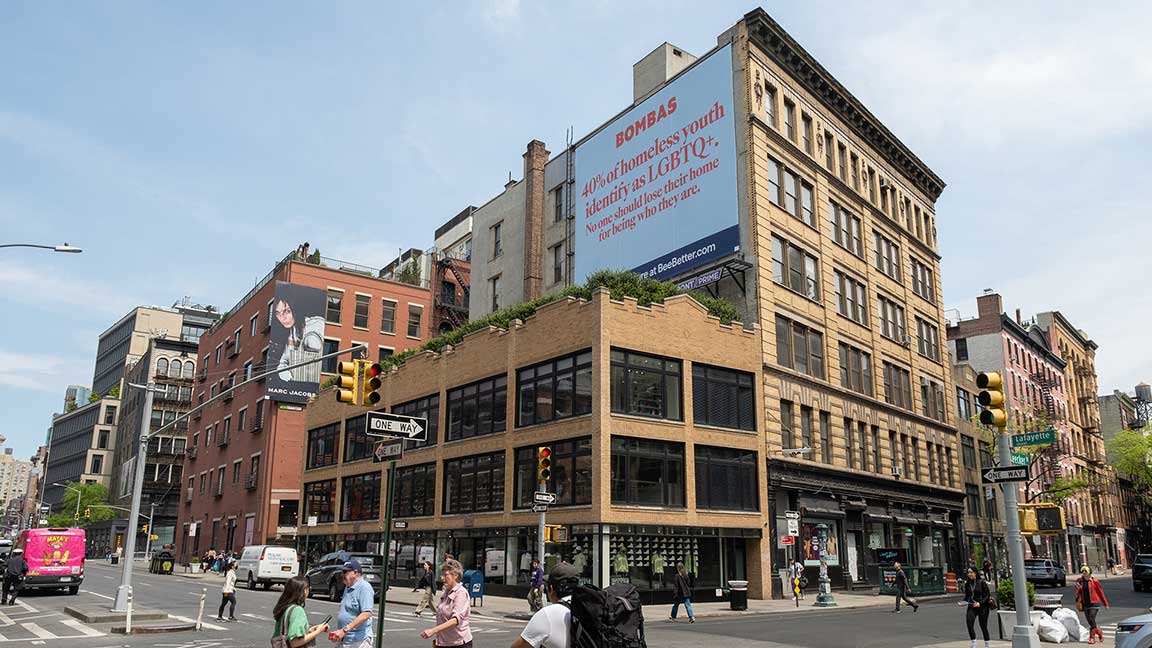
This spring Bombas took to transit advertising, including liveboards and Digital Urban Panels, as well as traditional billboards, to raise awareness of a critically important issue: homelessness.
"If you've been following Bombas since the beginning, since their Shark Tank days, they have always been about more about getting people in need socks. Selling their socks so they could give away socks has always been their mission," said Glick. "But with this new campaign, I love that they're not just talking about what homeless people need, but why they're homeless. Like maybe it's about who they love and their families kicking them out."
But moving copy lines aren't all that powered this campaign. "Part of its effectiveness is also just being paired with street level assets to help drive home the messaging. It blends reality and emotion," explained Martinez. "They're highlighting a real issue with measurable stats that are easy to digest, that connect to the heart and the situation. Like, how many homeless New Yorkers are often working two jobs or go months without ever hearing their name. I think it's all great, genius copy that is real and grounded, in a way for the average passerby to be able to understand and relate to and sympathize for."

There's an inherent difference between getting someone to buy something and getting someone to feel something. So how does out of home creative reflect that?
Martinez emphasized the importance of the call to action. "I think it comes down to how human you can make it feel. With the goal of sales, there's CTAs tailored to making you want something. But the human nature CTA has to really speak to the heart."
One of the campaigns that Izzy designed was for the Orange County Animal Shelter. What made that one work? "They speak a language that calls out the main ways people are able to help out with the shelter, in a language that resonates with animal lovers all across Orlando."
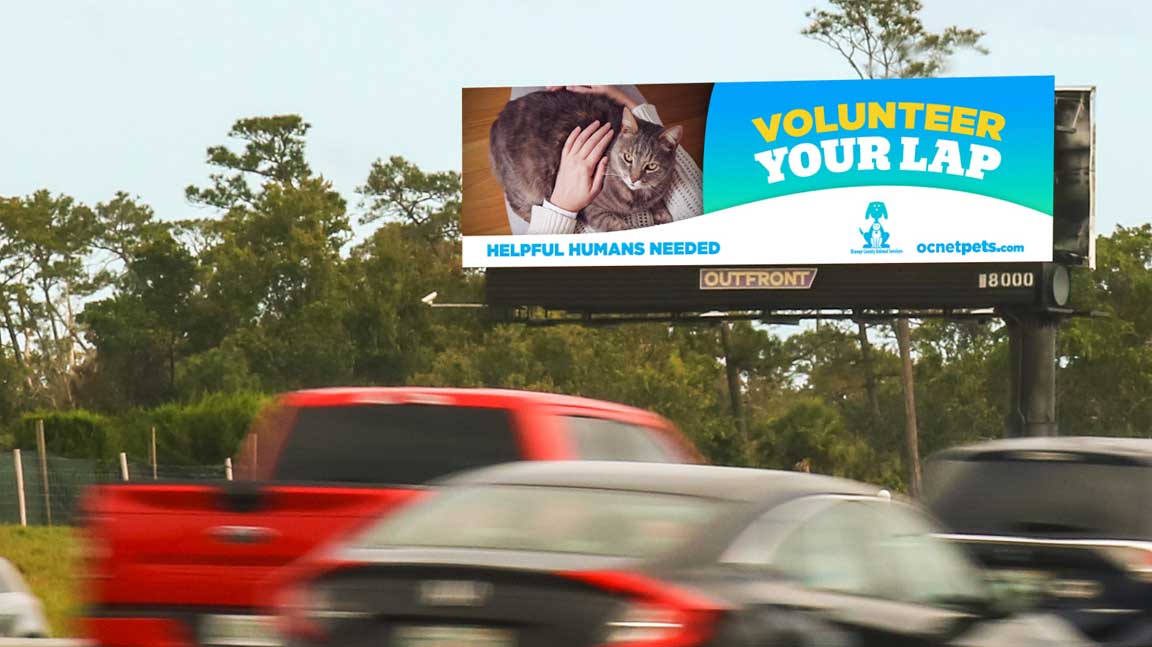
"They do feel like a PSA, but they're actually not," added Glick. "They let us really dive in deep to get to the heart of their audience and who's adopting their animals." After all, even a purpose-driven campaign starts with understanding who you're trying to reach. "In the end what happened all the way through the campaign was of the pets we've shown, 99% of the time those pets have been adopted."
Coming from the heart, and demonstrating the impact that consumers themselves can make, is essential to driving the next step once you've touched someone. "Showing how their hands help move mountains – together we can really create change," Martinez said. "Then being able to show the results as almost sort of a follow-up – showcase the hands that came together."
Jarrod told us about a campaign STUDIOS created for the Coalition for the Homeless of Central Florida.
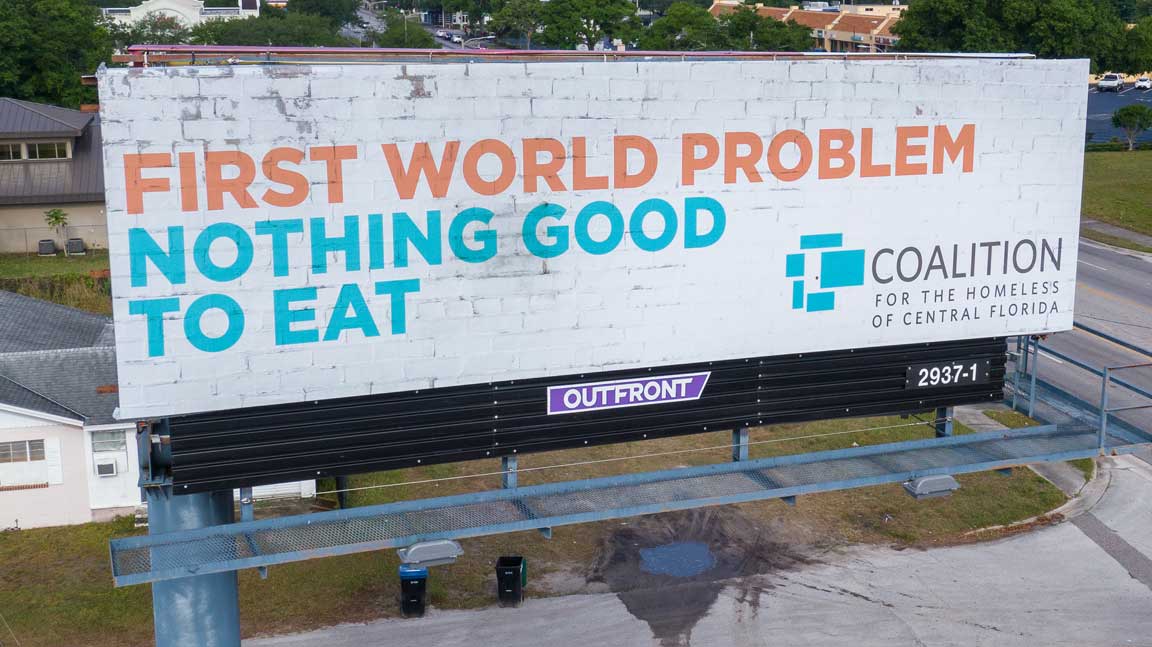
"We did this tease-and-reveal campaign which made people think, very much like the Bombas campaign," he said. "We called it Real World Problems. It was about, you know, we opened up the refrigerator 100 times a day and we're like, oh, there's nothing good to eat, right? But what do we have in there? We've got milk, we've got fresh vegetables, we've got leftovers. When in actuality in the real world, there are people that have nothing at all to eat.
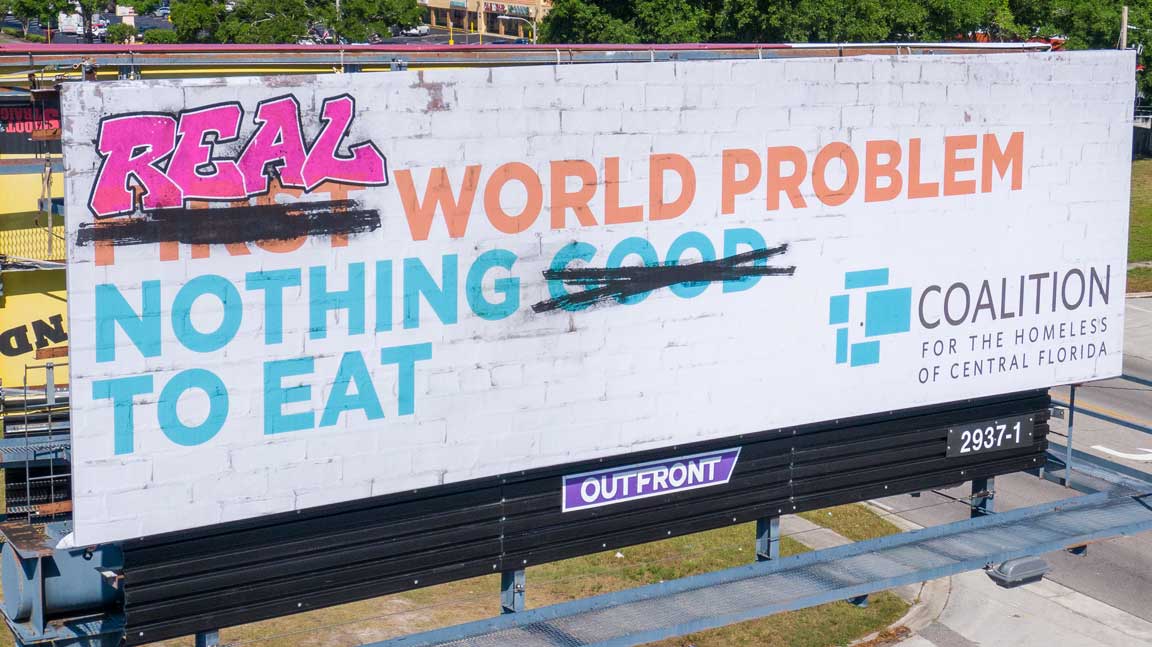
Finally, we asked what best practices brands should keep in mind when developing a purpose-driven campaign.
"Most important is making sure the message and the motivation is forefront," said Glick. "We see this a lot with PSAs. There are a lot of people that want to do good, but their brand or whatever seems to take precedent. The ad becomes more about the brand than the cause. You have to make sure the cause is the most important thing.
"And then of course, sticking to all the usual best practices for out of home, keeping your message short, keeping it sweet, making sure that people get it immediately as they're driving by it at 65 miles an hour or walking by with their hot dog on the street."
"Have heart, really focus on that human approach," added Martinez. "Think about what's going to tug on some heartstrings and some feelings. It could be a well-timed song in a commercial. It could be strong visuals, it could be the honest copy and messaging. It could be the results or consequences. Pull back that curtain and show the heart of the mission that that stands with the campaign."
STUDIOS are experts when it comes to creative that makes people feel – or that makes them buy. Contact us to learn more.
Author: Jay Fenster, Marketing Manager @ OUTFRONT
Links to third-party content are not endorsed by OUTFRONT Media.
Relevant OOH Content Straight To Your Inbox
Essential out of home insights, trends, and success stories. Delivered weekly.
